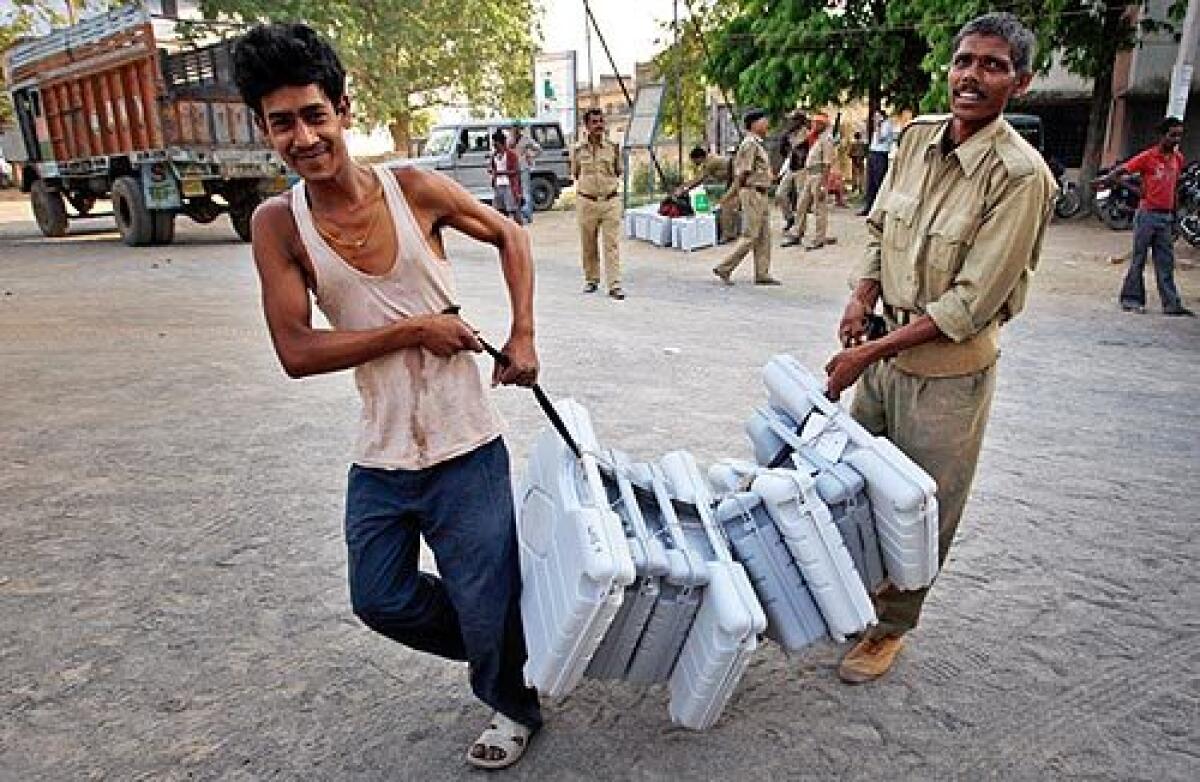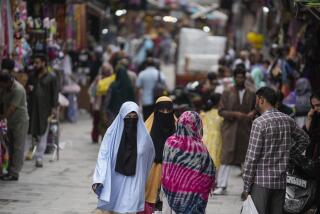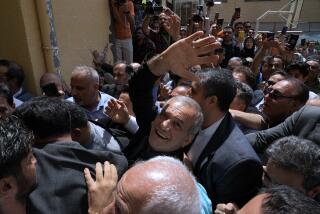Monthlong India election begins

- Share via
Reporting from New Delhi — Voting in the world’s most populous democracy kicks off today, featuring hundreds of political parties, aging leaders and a colorful cast of Bollywood and cricket stars offering themselves up for the yea or nay of the masses.
An estimated 714 million people -- more than twice the population of the United States -- are eligible to vote in India’s monthlong, rolling election.
Electoral districts have been recast for the first time in almost two decades, giving somewhat greater weight to urban voters. And more young people are expected to cast their ballots than ever before, part of a demographic surge that has India poised to overtake China in coming years as the nation with the largest population.
But mostly the election is about good old-fashioned horse-trading, backroom deals and vote buying, with very little in the way of a definitive result for weeks to come.
Neither of the two main rivals -- the ruling Congress Party, which has led the country for the last five years and most of the last six decades, and the main opposition Hindu nationalist Bharatiya Janata Party, or BJP -- are expected to win enough seats in the 543-member lower house of parliament to rule outright.
As a consequence, the results in mid-May will probably mark the start of new haggling as coalition partners flirt, play hard to get and secure dowry promises in search of a majority.
“It will be a coalition government again, but we don’t know what the cocktail is going to be,” said Pratap Bhanu Mehta, president of the New Delhi-based Center for Policy Research. “In the past 10 years, there was at least one party with a clear lead. If that doesn’t happen, things will be even messier.”
Pollsters give the Congress Party a modest edge in an election that has seen few national issues. The ruling party probably would have campaigned on its record of 8% annual economic growth in recent years if the recent global downturn hadn’t slowed the economy. The government also has come under criticism for its handling of the terrorist attack in Mumbai in late November, which killed more than 170 people.
The BJP, meanwhile, has suffered from fractured leadership. And its mainstay issues of anti-terrorism, Hindu nationalism and Hindu-Muslim distrust have failed to excite as many voters this time.
That’s left some fretting that mainstream politicians are ignoring voters’ real concerns: security, jobs and the rising price of chapatis and curry.
“Congress and the BJP are both horrible parties,” said Dulichand, 65, a retired government worker who uses one name.
“They’ve both sold out to the industrialists.”
A third group of regional and wannabe national parties known as the Third Front offers an alternative, with Mayawati, a member of the Dalit, or “untouchable” caste, who also uses one name, getting many headlines.
Mayawati has a chance of becoming the next prime minister if her Bahujan Samaj Party does exceptionally well or if a logjam between the two main rivals leads to a dark-horse candidate. She has already emerged as a power broker by climbing her way to the political heights in Uttar Pradesh, India’s most populous state.
The election’s hundreds of diverse candidates include former national cricket team captain Mohammad Azharuddin, Bollywood actor Sanjay Dutt and ex-diplomat and writer Shashi Tharoor.
In addition to the widespread distribution of “tea money,” or bribes, some eager candidates reportedly have shined constituents’ shoes, ironed their clothes and fielded demands to keep rampaging elephants at bay and to offer up more honest candidates “like Barack Obama.”
The spotlight has also focused attention on the voting power of the estimated 200 million Indians under the age of 25. The young have been urged to participate by a massive registration drive on television, blogs, YouTube, Facebook and a new song by Indian rock band Thermal and a Quarter titled “Shut Up and Vote.”
Somin Bhatil, 21, a computer animation student who plans to vote for the Congress Party, said he hoped younger voices could alter the political culture. “I don’t know if it will happen right away,” he said. “But change will come.”
Youthful enthusiasm contrasts with the top ranks of the two leading parties. BJP leader Lal Krishna Advani, 81, recently appeared in a gym lifting weights in a bid to bolster his appeal. And Prime Minister Manmohan Singh, 76, says his recent bypass surgery shouldn’t slow him down.
The old guard is using websites, social networking platforms, Bluetooth kiosks, text messages and traditional mass media to reach new voters, with Congress forking over nearly $200,000 for the rights to “Jai Ho,” the Oscar-winning theme song from the film “Slumdog Millionaire.”
The monthlong election is organized into five phases in part so that police can blanket trouble areas.
That hasn’t prevented the deaths of at least two candidates so far, including Indian Justice Party member Bahadur Sonkar, who was found Monday in Uttar Pradesh hanging from a tree. Colleagues, who blame a rival politician, allege that Sonkar was dragged from his house in the middle of the night, killed and then strung up.
Bihar state also saw a predawn attack on a border guard camp Monday aimed at disrupting polling.
The massive exercise in democracy will require about 1.3 million voting machines at 823,804 polling stations. Most of the machines in urban centers are electronic.
“The new machines are good,” said Dulichand, the retired government worker. “There’s less scope for funny business. Of course, people can still catch you before you walk in and offer you money. But it helps. The simpler the better.”
More to Read
Sign up for Essential California
The most important California stories and recommendations in your inbox every morning.
You may occasionally receive promotional content from the Los Angeles Times.













